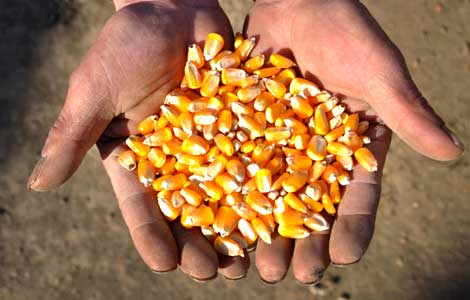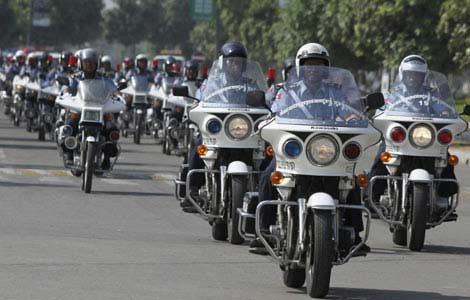 |
|
|
|
|||||||||||
Module will collect samples from moon's surface, space official says
Preparations are well advanced to launch a moon mission and bring about 2 kilograms of lunar soil samples to Earth, a leading space program official said. The mission is part of the third phase of the lunar exploration program.
Engineers are expected to lay the groundwork this year, said Hu Hao, chief designer of the lunar exploration program's third phase and a deputy to the National People's Congress, which ended on Wednesday.
The mission will involve a "relay" approach, that will require precision rendezvous and docking in lunar orbit, he said.
The mission will see a rocket launched from Earth. A four-module spacecraft will then enter lunar orbit.
Two modules will land on the moon, one will scoop up soil. This will be placed into the ascending module that will blast off from the lunar surface and dock with the orbiting module. The sample will then be transferred from this module to one that will be jettisoned for Earth re-entry.
Declining to confirm the launch date, though previous reports suggested 2017, Hu said that several key technologies have to be perfected, including the launch of the ascending module from the lunar surface and the collection of soil samples.
"It's impossible to know the conditions that the module descending onto the moon will experience," he said.
They could be sandy, or rocky, and collecting soil samples depends on the type of conditions at the landing site, he said.
Getting samples is notoriously difficult. A mission sent by the former Soviet Union once had a drill attached to the landing module but even that failed to deeply penetrate the lunar surface.
Its three missions collected just over 300 grams of lunar soil. The United States had better success. Its Apollo program returned 381.7 kilograms of rocks and other material from the moon, thanks in large part to astronauts. The US gave China one gram of lunar soil as a gift in 1978. China requires lunar soil to conduct scientific research.
Judging just how much lunar soil can be scooped up and returned to Earth is difficult.
"Our mission is also a robotic mission. Scientists expect the mission to bring back 2 kilograms of lunar soil but the exact amount of soil returned might be less," he said.
Rendezvous and docking in a lunar orbit also poses challenges. But lessons can be learned from previous rendezvous and docking between the unmanned Shenzhou VIII spacecraft and Tiangong-1 space lab module, he said.
"A lunar-orbit rendezvous is more than 300,000 km from Earth. It will fully test our telemetry, track and command systems," he said.
Engineers also have to solve the re-entry problem. The return capsule will be hurtling to Earth at, or close to, speeds of 11.2 km per second. This speed will be faster than returning manned spacecraft, which re-enter at 7.9 km per second.
Ensuring a safe return at this speed is one of the challenges, he added. China's lunar exploration program has three stages; orbiting, landing and returning.
Currently China is in the second stage, with three lunar exploring spacecraft, Chang'e-2, Chang'e-3 and Chang'e-4.
Ye Peijian, chief commander of the third lunar probe, Chang'e-3, at the China Academy of Space Technology, said that it is expected to be launched next year to conduct lunar exploration.
Different from the previous two orbiters and other spacecraft China designed, Chang'e-3 is the first spacecraft with "legs" to support itself in landing, he said, adding that previous manned spacecraft used parachutes.
The orbiter will carry a lunar rover and other instruments for surveys and observation, said Ye, a member of the top political advisory body.
The 100-kg lunar rover, China's first such device, is designed to operate on the moon for more than three months and during this time it will encounter extreme conditions, including temperatures below -170 C.
China launched Chang'e-1 in 2007 and Chang'e-2 in 2010. The first probe retrieved a great deal of scientific data and a complete map of the moon while the second created a full higher-resolution map of the moon.
The Chang'e-2 is now on an extensive exploration mission some 1.5 million km from Earth. Ye said it is in good condition and scientists are planning its next stage.
"It could fly toward the Earth to test returning orbit for future spacecraft or travel farther to explore an asteroid," he said.
Contact the writer at xindingding@chinadaily.com.cn
Wu Ying, iPad, Jeremy Lin, Valentine's Day, Real Name, Whitney Houston, Syria,Iranian issue, Sanyan tourism, Giving birth in Hong Kong, Cadmium spill, housing policy

|

|

|

|

|

|